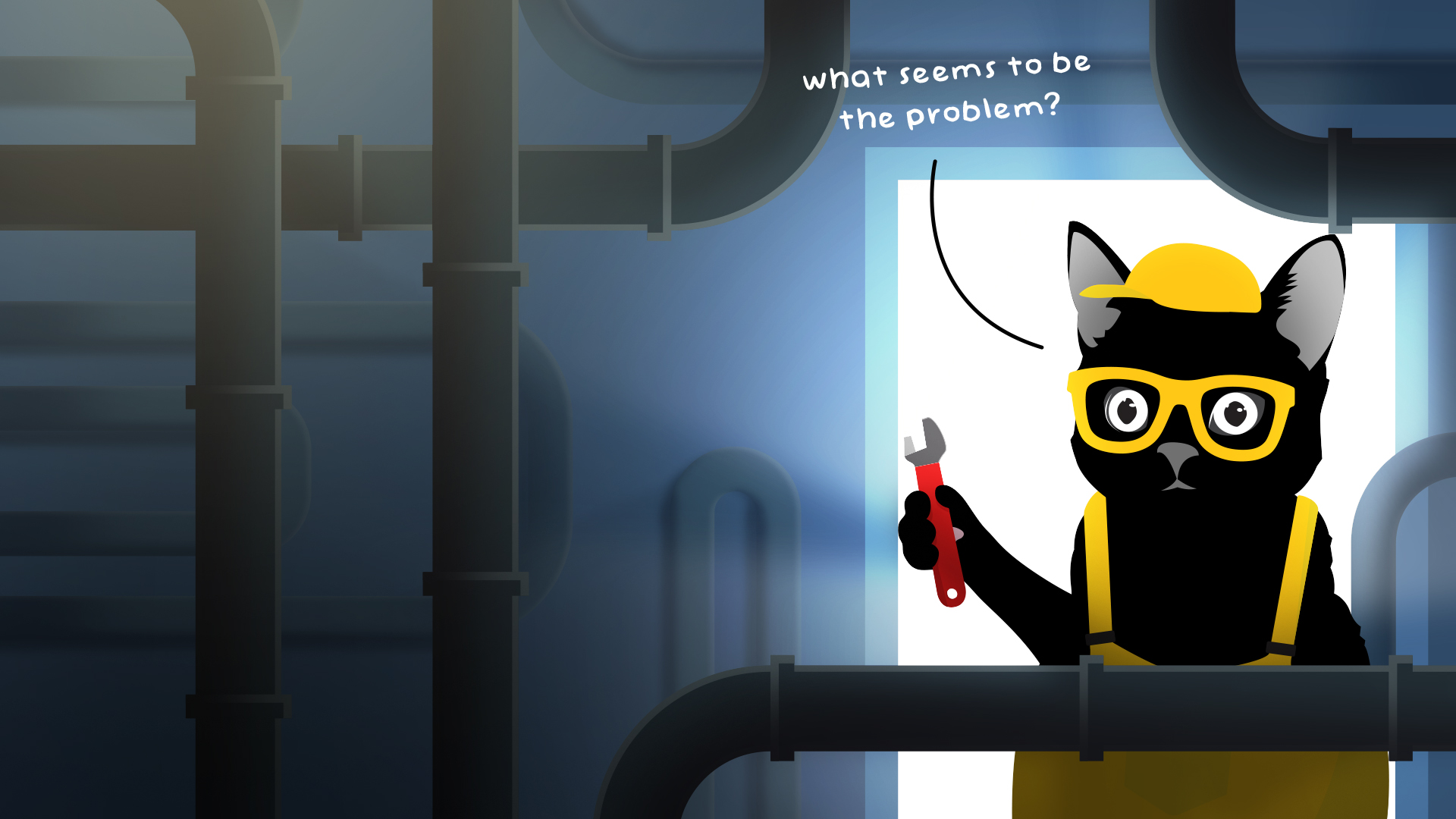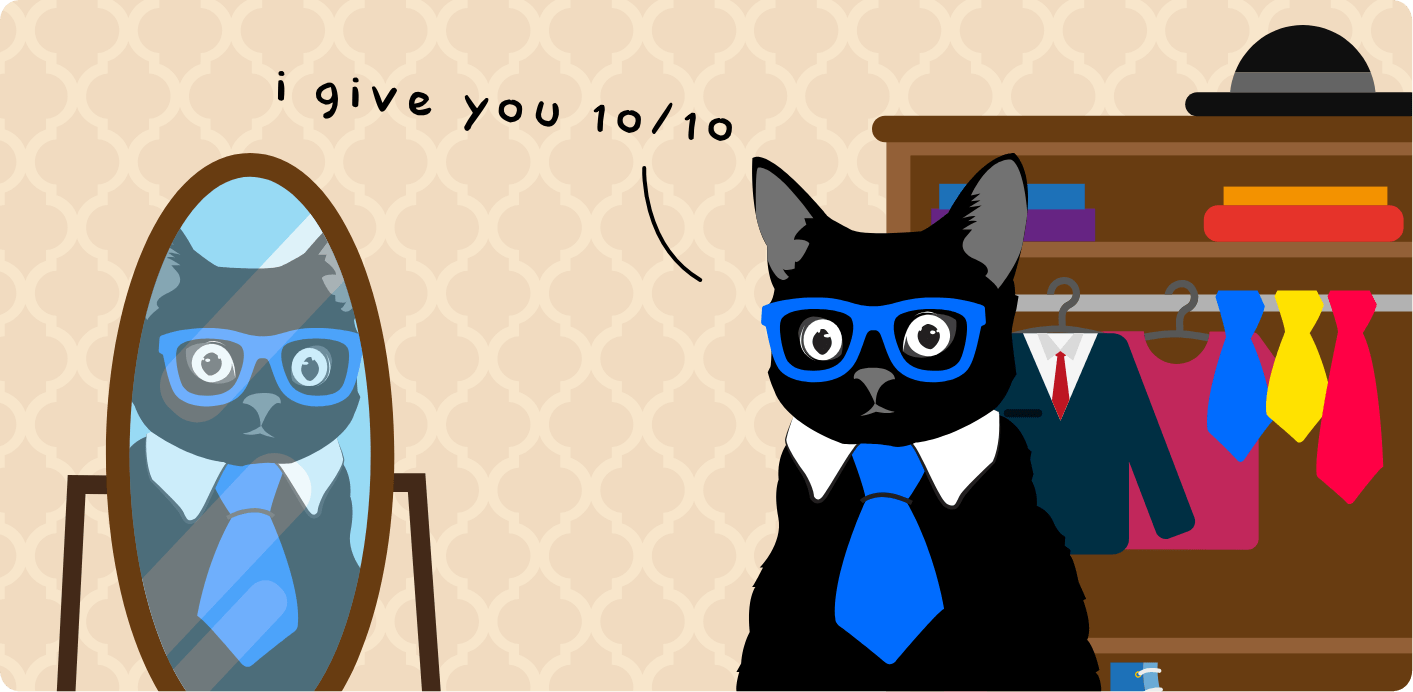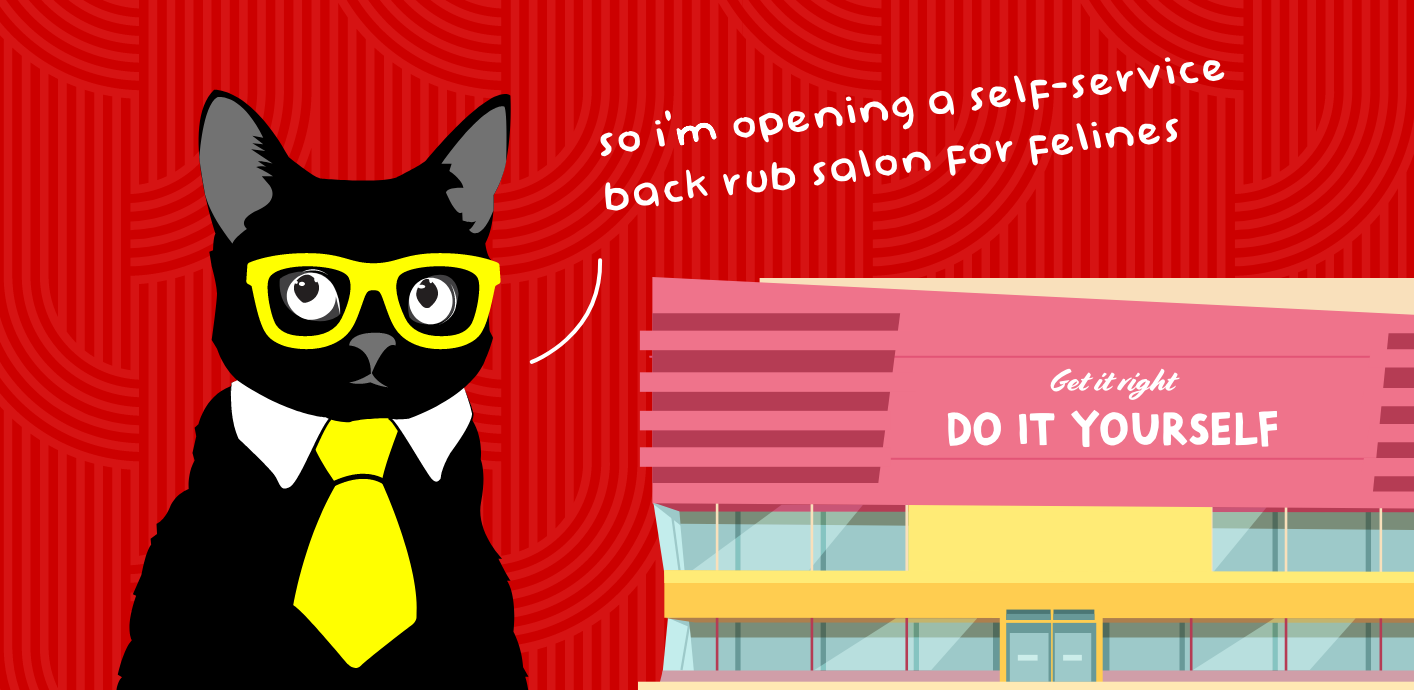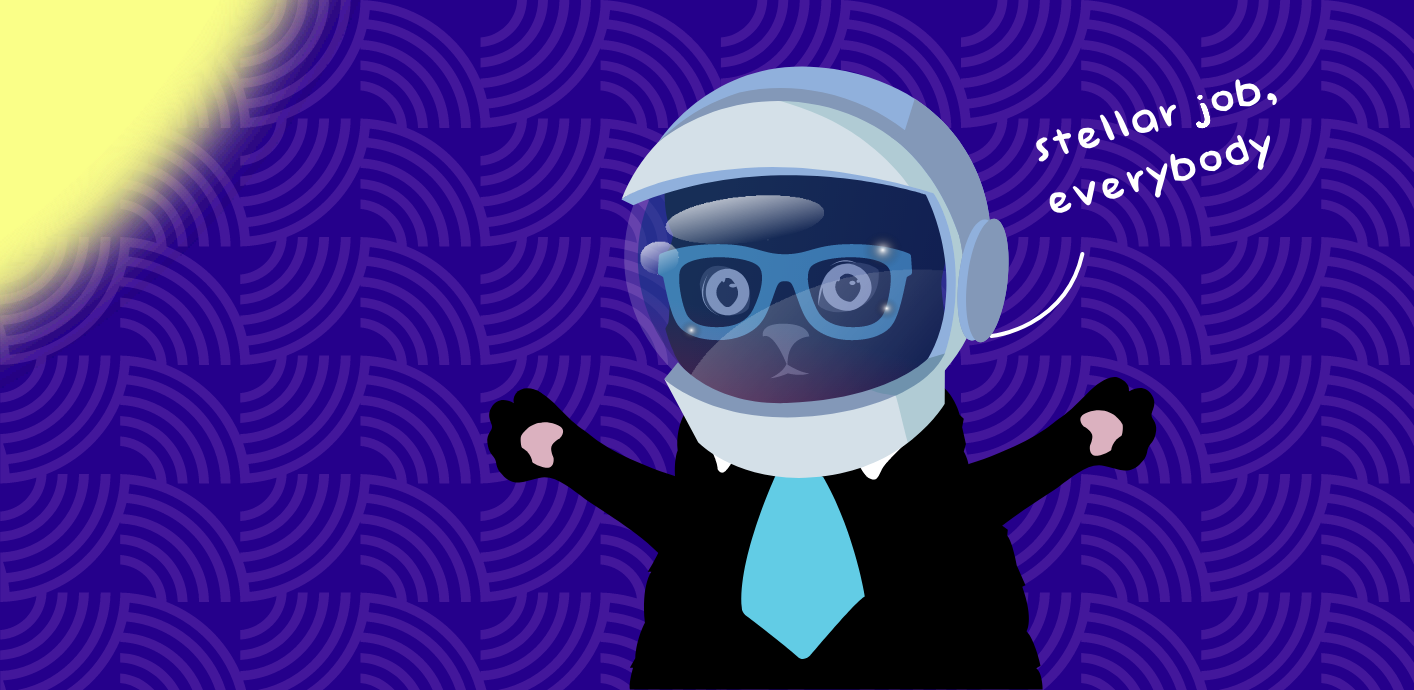Canned responses are a customer service tool that brings uniformity and efficiency to the most common customer support inquiries your team encounters.
In this post, we’ll explore what a canned customer service response is, how to craft a purrr-fect canned response, and dive into some ready-to-use canned response templates.
What is a canned response in customer support?
A canned response is a pre-written, ready-made response that customer service representatives use to respond to common customer questions and issues. These responses — also known as talk tracks, macros, or templated responses — address frequently asked questions, standard procedures, or known problems that customers often encounter.

The benefits and limitations of canned customer service responses
Canned responses save time and ensure consistency in customer interactions by providing uniform answers to common inquiries.
For example, Found QA Specialist Kalyn Garman created a bank of prewritten emails as a baseline to help the Found customer service team confidently support their customers. She then used automation to give the team easy access to the canned responses. Check out the full case study here for more details →
Canned responses also help maintain consistency in both your communication and quality of service. Providing canned responses to start and allowing your team to customize as necessary ensures your customers get the same answers no matter who they’re speaking with.
While incredibly useful, it’s important not to rely solely on canned responses. Overusing them will make customer interactions feel impersonal and robotic rather than warm and empathetic. Find a balance between using canned responses for efficiency and providing personalized attention to individual customers when needed, such as for more complex or sensitive issues.
![]()
How to create good customer service canned responses
The best canned customer service responses are conversational, easy to personalize, and avoid common customer service jargon. Here are the best practices you can follow to create great canned responses:
- Identify common inquiries. Look for patterns in the types of queries you receive to determine the topics that warrant canned responses.
- Write clearly and concisely. Avoid using jargon or technical terms that customers may find confusing. Keep responses concise while addressing the main points of the issue.
- Personalize when possible. Although canned responses are pre-written, personalize them by incorporating variables such as the customer’s name, order number, or relevant details. Personalization adds a human touch and makes customers feel valued.
- Apologize and empathize. Canned responses shouldn’t sound like a robot. For customer issues, apologize and admit any wrongdoing. For simple questions or how-to’s, empathize with the customer for needing to contact customer support in the first place. Keep it human.
- Don’t use canned responses when personalization is needed. You can build empathy and human touch into a canned response, but sometimes nothing beats a fully personalized response. Don’t be afraid to forego a canned response when you’re dealing with a sensitive situation. Customer service canned responses should complement personalized communication, not replace it. That’s how you deliver the best customer experience.
To hear about this process in action, check out the podcast conversation we had with Arielle Yoder, where she discusses creating a bible of canned responses taken from past conversations to help coach her team →

12 of the best canned responses — templates & tips
Now that you are equipped to create your own templates that are sure to be the cat’s meow, let’s look at some canned response examples. You can use these templates as-is, or as a base to personalize from based on your company’s needs.
Here are twelve of the best canned responses you can start using now.
- Hello! How may I help you today?
- We’ve got your message
- Known issue reply
- Thank you for your purchase/Welcome email
- Feedback/feature request thank you
- We need a little more time
- Closing case because of not hearing from the customer
- Self-service instructions
- We need more information
- We’ve escalated your support case
- Issue resolved
- Survey request
1. Hello! How may I help you today?
First impressions are always important. You want the customer support rep who greets your customers to portray an excitement to serve the customer. This canned response will help. Use this for chat support or phone calls.
Hello [customer name if given]!
Thanks for contacting [company name] support. My name is [your name]. How can I help you today?
✨ Pro tip: Asking “How can I help you today?” instead of right away asking for their name or customer number keeps the interaction conversational rather than robotic. It also puts the focus on why they called, which means the focus is on their need rather than your company’s need. You can always ask for their name if they don’t naturally give it to you after describing their issue. Saying something like, “I’d be happy to help you with that! And who am I speaking with today?” is a great way to do this.

2. We’ve got your message
You can use this canned response in two ways: through copy and paste or via automation. It simply states that the customer’s request has reached the intended destination and that it’s being worked on. Here are a couple of canned response examples for each scenario.
Copy and paste reply:
Hello [customer name]!
Just wanted to let you know I’ve got your support request to [describe request] and am looking into it now. [OR] Just wanted to let you know I’ve got your request. Sorry you’re having an issue with [describe issue].
I’ll follow up with you in [expected timeframe].
Auto-reply:
Hello [customer name]!
Just wanted to let you know we’ve got your email. One of our support staff is working on it now, and you can expect a follow-up email in [expected timeframe].
—————————————————
[original email body from customer]
✨ Pro tip: Like the template above, instead of sending off a generic “We’ve got your message, and we’ll get back to you shortly” response, give context and set expectations with the customer. Include what their specific issue is in your canned response — or include the email thread if it’s an auto-reply — and set a timeline for a response and anything else the customer can expect. This approach effectively takes care of after-hours requests as well.

3. Known issue reply
Whenever there is a larger issue with your product or service, your support team will always get an influx of support cases. These situations are when a canned response is most efficient. Craft a response you can use as a talk track or easily copy and paste via text for these situations. Here’s an example:
Hey [customer name],
I’m so sorry you’re having an issue with [describe the customer issue]. I can understand how frustrating it is. This is sadly happening to many of our customers, and we’re hard at work on resolving it.
I’d be happy to follow up with you [or] this should be resolved in [state time frame]. Can I send you an email at that time?
✨ Pro tip: Prioritize empathy here. Setting expectations for follow-up and/or a resolution can limit customer frustration and reduce the number of repeat contacts.
4. Thank you for your purchase/Welcome email
Sending an email thanking your customers for their one-time purchase or for subscribing to your product or service is a great way to show how excited you are to work with them. Reiterate the benefits of your offerings and introduce how they can get support as well.
Hey [customer name]!
We are PUMPED that you purchased [product or service they bought or subscribed to]! We’re excited to help you [state the benefits and results they’ll get because of their purchase].
Below are some resources to get you started with [product/service], including a video walkthrough.
[List of resources]
If you need help at any point, we’re here for you. Our support hours are [list support hours], but you can contact our customer service agents by [list ways to contact support].
Enjoy your purchase, and let us know if you need anything!
✨ Pro tip: Keep it short and simple but be sure to include what they purchased, what they can expect from their purchase, and any further assistance they can consult, such as FAQs and how-to’s. Use links to a video walkthrough, knowledge base, and further resources instead of including everything in the body of the email to keep it concise.

5. Feedback/feature request thank you
Your customers will contact you from time to time with feedback on your product or specific feature requests. You can equip your support team with a canned response to efficiently and uniformly address these requests and satisfy your customers’ needs even if you don’t have the feature they’re requesting.
Hi [customer name]!
Thanks for contacting [company name] support with your [feedback/feature request]. We’re not perfect, but it’s feedback like yours that helps us improve.
While we can’t [list the specific feedback your customer gave], here’s what’s going to happen with your request:
[Bulleted list of the customer feedback review process.]
✨ Pro tip: Include a “Here’s what we do with every product feedback or feature request” section in your template. It helps give the customer piece of mind knowing there’s a customer service process in place for requests like theirs instead of a generic “Thanks. We’ll pass this along.”
6. We need a little more time
There are times when things don’t always go as planned when you’re resolving customer issues. Use a canned response to inform your customers that it’s taking longer than expected and lay out new expectations.
Hey [customer name],
I’m sorry you’re still experiencing an issue with [describe issue]. It’s taking a little longer than we thought to resolve the issue, but we’re still working on it for you. I’ll continue to update you as I know more. You can expect an update [or] I’m expecting this to be resolved by [expected timeframe]. Sorry for the delay.
✨ Pro tip: Just like the known issue canned response, reduce the energy level to match the news you’re delivering. It’s frustrating not to have your issue resolved in an expected timeframe, but great communication can effectively reduce the level of frustration.

7. Closing case because of not hearing from the customer
If you’re not getting what you need from your customer, it’s ok to close the case as long as you give them the reason and instructions for contacting support again. Here’s an example:
Hello [customer name]!
I’ve attempted to reach you a few times about your issue, but I haven’t heard a response yet. I’m going to close your case.
However, if you’re still having issues with [paraphrase the issue], we’d be happy to look at it again for you. Please feel free to reply directly to this email or open a fresh ticket with our support team. Sorry we weren’t able to connect!
✨ Pro tip: Even though it isn’t your fault, apologize for not being able to connect with the customer. There are myriad reasons why customers stop responding, so showing empathy and apologizing helps continue the customer connection even when communication is one-sided.
8. Self-service instructions
Self-service is one of the best ways to boost support efficiency and cut down on the number of support interactions a company receives. It’s also preferred by customers, with 88% expecting access to a portal for self-service when they buy from a brand.
Create a canned response that teaches your customers how they can do things themselves.
Hey [customer name]!
Thanks for contacting [company name] support. I’ve gone ahead and [describe their fulfilled request]. In the future, you’re able to make this update yourself by signing into our portal and following the below instructions:
[List out instructions}
Hope that helps, and have a great day!
✨ Pro tip: Unless it’s something you legally cannot do for the customer, err on the side of completing and then educating. Your customer will appreciate you going above and beyond to complete their request, even if they’re able to do it themselves. At the same time, they will also appreciate you educating them because they may not even realize they can do it themselves.

9. We need more information
Not every initial inquiry from your customers will be clear. Your customers may speak a different lingo than your customer service agents are used to, or they may not be able to effectively describe what they’re seeing. Design your canned response to ask for more information for these situations.
Hi [customer name]!
My name is [your name], and I’ll be helping you out. My apologies, but I’ll need just a bit more information from you in order to figure out what’s going on and how to fix it for you. Would you be able to provide the following information, please?
[Bulleted list of any information needed to resolve the issue]
✨ Pro tip: Bulleted lists are great for listing out what you need from the customer because they are orderly and allow the brain to organize the information. They also ensure information isn’t easy to miss, like it can be in a paragraph.
10. We’ve escalated your support case
Some support issues won’t be solvable by your frontline customer support team. You can create a canned customer service response for times when escalation beyond your support team is necessary.
Hey [customer name],
I’ve run into some issues trying to resolve your [describe customer issue]. I’m sending this over to a senior member of our team to look at this further. A member of our senior support staff will be following up with you in [expected timeframe] with either a resolution or an update.
Sorry again for the issue and for the delay.
✨ Pro tip: Your escalation template should be similar to the “we need a little more time” canned response, but this time you’ll be including where the case is going. This approach sets expectations for how seriously you’re taking the issue by getting further help and who exactly will be following up. You’re also still setting expectations for a turnaround time.
11. Issue resolved
As a customer support rep, this email is one of the most satisfying to send out. And it makes your customers happy too! When your
Hello [customer name]!
I’m happy to report that your issue with [paraphrase issue] is resolved! Sorry again for the issue you had. If you need anything else, or if this happens again, don’t hesitate to contact us!
✨ Pro tip: Even though the issue is resolved, you’ll want to include two things in your communication. First, paraphrase the issue to double-check that your customer’s needs are taken care of. Second, remind the customer they can contact support again if they have any other issues.

12. Survey request
After support interactions, gathering Customer Satisfaction (CSAT) data is a must. You want to know how satisfied your customers are with their most recent support interaction. Send out an automatic canned response to solicit surveys.
Hello [customer name]!
Thanks for contacting our support department for help. Now that we’ve resolved your issue, we’d love to know how your support experience turned out.
Please use the link below to answer a quick, one-question survey on your most recent interaction with our support team. Thanks for your time!
✨ Pro tip: To increase engagement, keep the CSAT survey to one question. Something like “How satisfied are you with the support you received?” with a simple Yes/No/Sort of option will help your customers want to take the survey. You can also leave an optional feedback box to gain more insight as well.

Canned responses make customer service teams shine
Canned responses are an integral part of efficient and united customer service teams. But just creating your responses isn’t enough. After you’re done, it’s important to make a plan to review and update the canned response templates periodically.
Responses can go out of date quickly, so periodically reviewing them helps you keep up with your customers’ changing needs and inquiries. With conversation reviews in Klaus, support managers can easily see customer service canned responses “in action,” assess their effectiveness, and spot opportunities for more answer templates.


